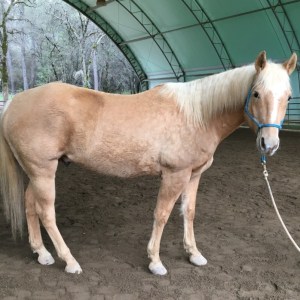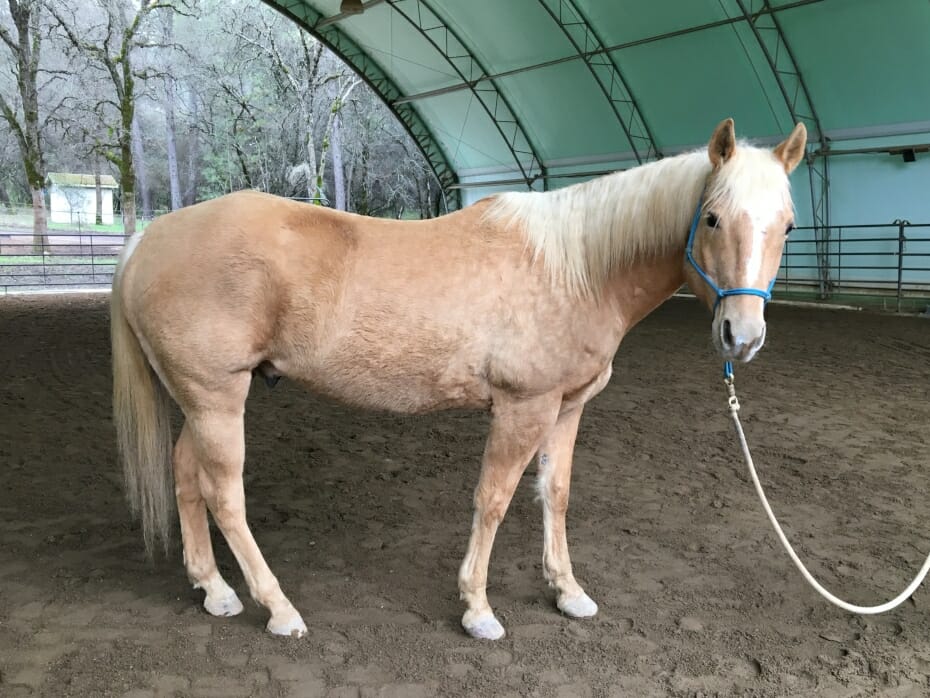
Horses have evolved over millions of years to be a herd animal that eats mostly fibrous matter and moves slowly but constantly over a big area every day. Fast movement is only exhibited for play, flight or fight usually in short bursts. When we domesticated the horse we started to put weight on their backs and asked for faster movement, often over a longer distance. We also changed the way they eat and the way they live – in small spaces, often even on their own. So instead of moving long distances and slowly grazing in a herd, the modern horse gets fed maybe twice a day, works for long periods of time and is stabled on its own. We also extend their life expectancy from 10 – 15 years in a wild horse to mid-twenties to thirties or even older in the domestic horse.
WHEN DID THE INJURY REALLY HAPPEN?
One thing that has not changed in the horse is the amazing ability to hide the pain. Horses are flight animals that will only show pain when it gets really bad. Otherwise, they act as if nothing is wrong until there is too much physical damage to hide the problem. So when we get called out to see a horse say with back pain, it can be a sudden onset due to a fall or a slip in the paddock. With an observant horse owner who picks the issue up quickly, it might be what I call “a one treatment fix”. But more often than not, there is more to the story than just the back pain. The horse might have had a problem in the foot or shoulders for a while and due to the compensation has been carrying the head too high. This might have caused a dropping of the back and a year or so down the track the back pain has become obvious. Now we might not only be dealing with soft tissue pain in the back but maybe kissing spines due to the long term compensation. All of the sudden the horse owner is not dealing with a horse that just has a sore back, but kissing spines and maybe underlying navicular disease or an old injury to the shoulder that caused the problem in the first place. These issues cannot be helped in one treatment and often it can be a question whether or not the horse will still be usable in the long run for the work it has been used for previously. This can come as a big shock to the owner and more often than not there is a lot of diagnostics involved and a team of specialists needed to help these horses back on track.

EARLY RECOGNITION OF PAIN
Therefore it is essential that we recognise pain in horses as early as possible and address the issue before it becomes a problem that might end the horses’ career and in the worst case even its life. You might think I’m exaggerating. Unfortunately, multiple issues are more common than just one.
Let me tell you a story about a lovely horse that I looked after for a little while before he got put down. This was a 17 yr old PRE gelding, presented with Cushings at the first treatment. He responded well to treatment and was happy in the paddock for a while. He was never a horse that was comfortable being ridden and his owner always felt there was something else going on, so she had stopped riding him some years ago, and kept him in the paddock with her other horses to live a happy life. Before he was euthanized, he started to show some signs of subtle lameness and his owner noticed he had lost his spark and was no longer his usual happy self. A week before euthanasia, he was presenting with 3 out of 5 lame in the left front leg. The decision was made to put him down and the owner was willing to donate the legs for an autopsy. It turned out the horse had a broken pedal bone in both front feet and a septic joint in the left front as the fracture had opened up the coffin joint. There where severe changes in the pedal bone, from pedal osteitis to severe osteoporosis to the point the bone looked like dead coral. This probably led to the fractures in the pedal bone in both front legs due to bone fatigue. There were also severe changes in the cartilage in all joints that were available for the autopsy. This is a perfect example for a horse that has been sore for a very long time without vets, farriers, bodyworkers picking up on it. All the changes we found were changes that were caused by compensation and wrong orthopaedic balance over a long period of time. I knew there was a lot going on with this horse, but I never expected the horrific changes we found.
So this is how severe the consequences can be if we don’t pick up on problems early enough to be able to help before it becomes a severe health issue. There is so much need for a better understanding of how horses compensate and how pain affects them in the early stages. So it is important to start taking a different look at the horses in your life and take small changes, both in the body and in behaviour, seriously and investigate before it is too late.
IF YOU FOUND THIS POST INTERESTING, YOU MIGHT BE INTERESTED TO SEE MORE ON THIS TOPIC:
https://www.equitopiacenter.com/shop/chiropractic-care/
For more resources, check out the Equitopia membership program – click here






